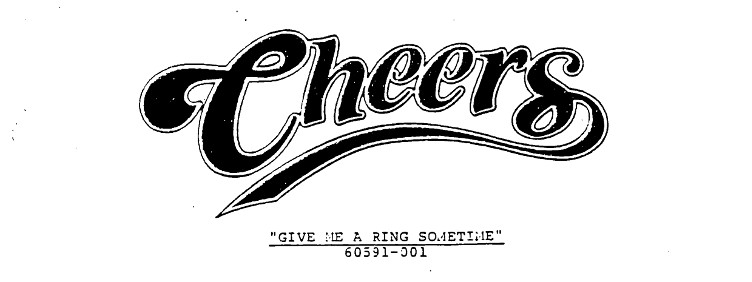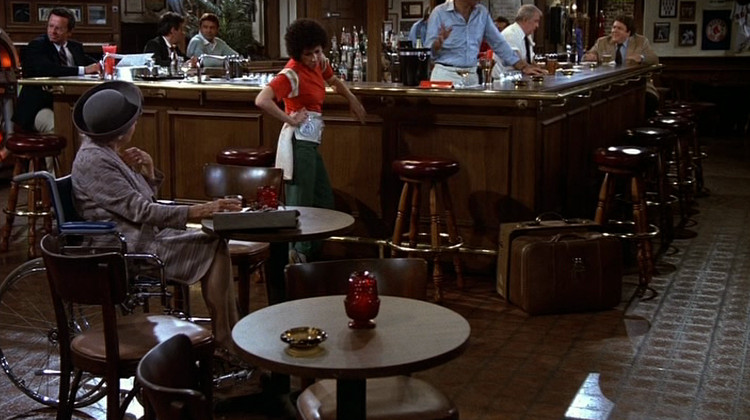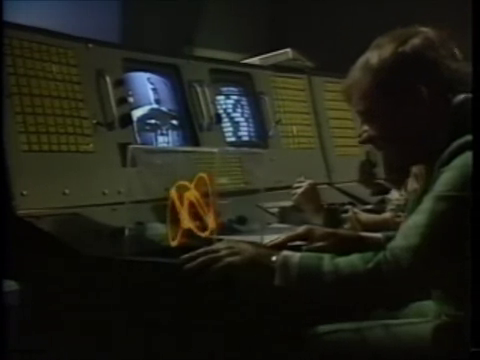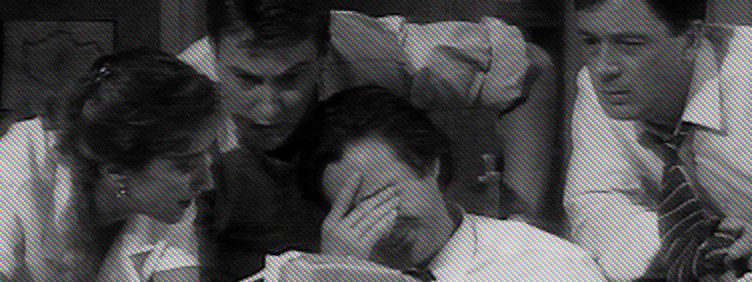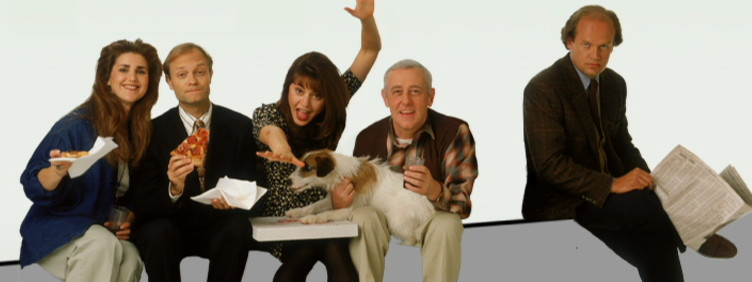Right now, I’m working on a piece for Dirty Feed which might be deemed Actually Useful™ – at least, for certain definitions of the word “useful”. A complete guide to every single piece of music heard in The Young Ones, right down to the most obscure library tracks which aren’t even mentioned in the paperwork.
But there’s something bugging me about the music used at the start of the very first episode, Demolition. Something deeply obscure, even for someone writing, say, a complete guide to every piece of music heard in The Young Ones. So rather than derailing that particular piece right at the beginning, let’s get all this nonsense out the way now.
Demolition, as I’m sure most people reading this will know, wasn’t just the first episode of The Young Ones. It was a pilot, in the true sense of the word – shot months before the rest of the series, in the hope of getting a commission. But the version which was finally broadcast in late 1982 isn’t the original edit of that pilot. A moment’s thought proves that it couldn’t be – the episode as we know it contains the regular title sequence for the series, which includes clips from episodes which simply hadn’t been made yet. I’ve been wondering what the original opening titles were for Demolition for nearly 20 years now.
Perhaps there is an echo of them left in the episode as transmitted, however. An echo that was staring me in the face for years, but I never even noticed until it was pointed out to me. The title card for the episode is highly unusual; nothing else like it appears anywhere else in the series. The gang, mildly awkwardly pasted into the windows of the original house:
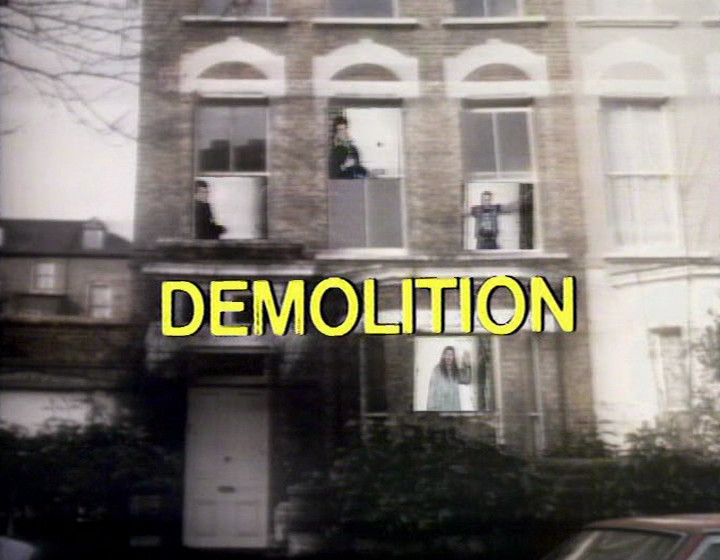
It looks like part of a title sequence, but it’s difficult to imagine this was created anew for the final broadcast version; it sticks out like a sore thumb compared to the rest of the episodes. Whether the entire pilot title sequence was just that shot with music over it as a placeholder, or something far more involved, is the kind of question which keeps me up at night.
We do have one other piece of information about that original pilot edit. A certain Peter Brewis used to have an unused version of the theme on his website, as originally used in the pilot. Sadly, his website has long since been deleted, but luckily someonee kept a copy and uploaded it to YouTube. And it’s fucking brilliant. (Visuals mocked up by the uploader, of course.)
I mean, who knows how it would have worked in the episodes as broadcast – it’s bloody long – but it’s lovely to hear for its own sake.
Which leads us – finally – to the oddity. Listen closely to the start of Demolition, as the strains of the broadcast title music start skipping, and then fade away:
[mejsaudio src=”https://dirtyfeed.org/wordpress/wp-content/uploads/2020/05/s1e1-opening.wav” volume=”false”]
The Young Ones, Demolition Opening
Nine seconds into that clip, just before the DJ starts speaking, there’s a snatch of a different version of the title music. It doesn’t sound like the broadcast version. It doesn’t sound like Cliff’s original version. It doesn’t even sound like the pilot version, as heard in the video above.
So… presumably, there was yet another version of the song, used for the original opening titles of Demolition? And once the opening title music was changed for the series, the new version was just pasted over the top… leaving that tiny fraction of the original version from the first pilot edit, to confuse us all decades later. Why else would it be there?
Yes, I am keeping myself busy during lockdown, why do you ask?
Read more about...
pilots, the young ones


